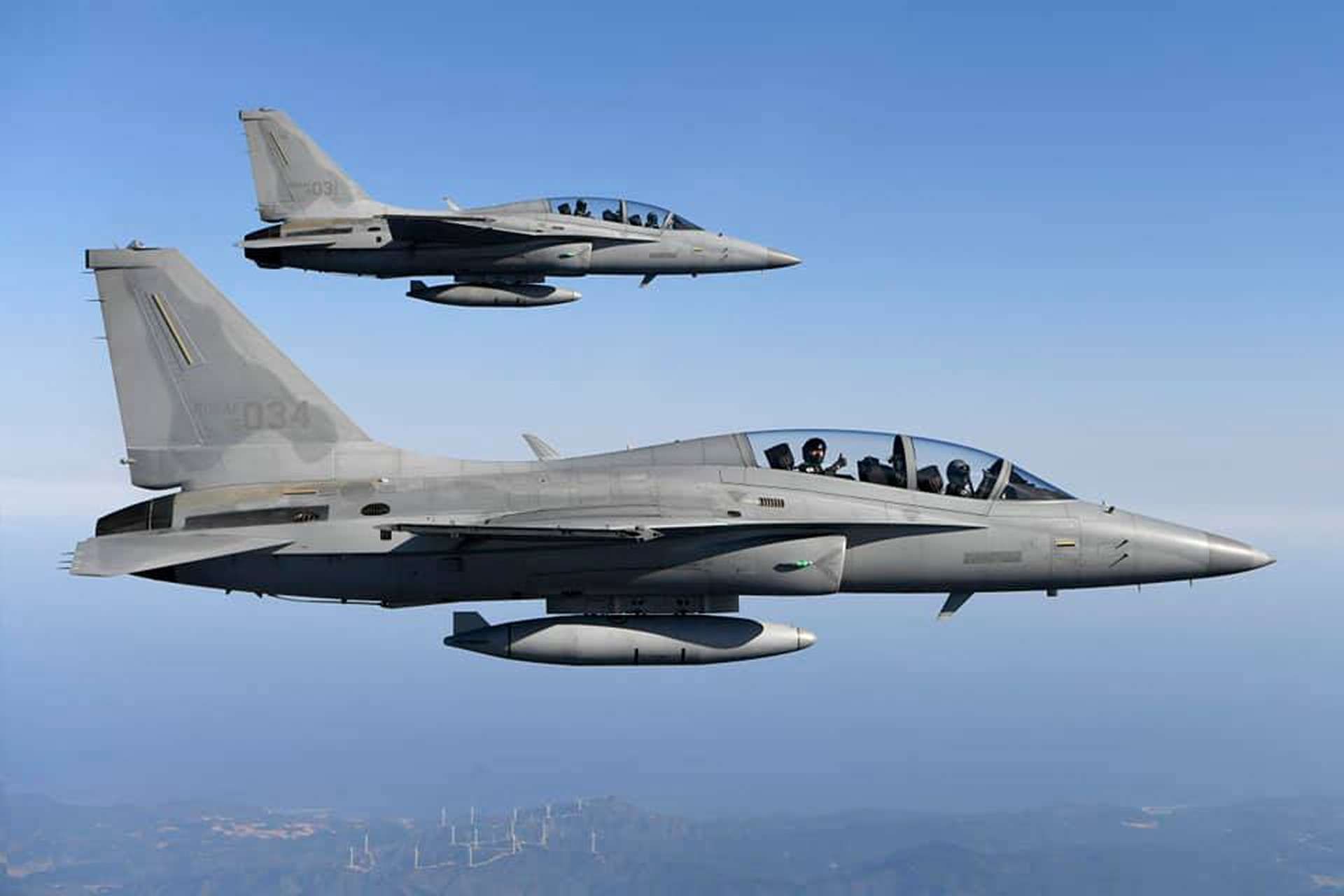Breaking News
Peru may buy up to 24 South Korean FA-50 light combat aircraft followed by potential KF-21 Boromae fighter jets.
According to Pucara Defense on July 1, 2024, the Peruvian government is negotiating with South Korea and Korea Aerospace Industries (KAI) to acquire between 20 and 24 FA-50 light combat aircraft for approximately $780 million. In addition to this significant investment, Peru is also considering joining the KF-21 fifth-generation fighter program, which could further modernize its air force and expand its aerospace capabilities.
Follow Army Recognition on Google News at this link

The Peruvian government is negotiating with South Korea and Korea Aerospace Industries (KAI) to acquire between 20 and 24 FA-50 light combat aircraft, and potentially join the KF-21 fifth-generation fighter program. (Picture source: South Korean Air Force)
As reported by Santiago Rivas, the Peruvian government is in discussions with South Korea and Korea Aerospace Industries (KAI) to purchase between 20 and 24 KAI FA-50 light combat aircraft. A letter of intent is expected in the coming weeks, with a contract likely to be finalized before the end of the year, amounting to approximately $780 million. Sources from both Peru and Korea have indicated that this initiative aims to replicate the KT-1 trainers' project, where 20 units were sold to the Peruvian Air Force (FAP), with 16 assembled locally by the FAP's Maintenance Service (SEMAN) at the Las Palmas Air Base.
The FA-50, developed by KAI, is a light combat aircraft derived from the T-50 Golden Eagle light jet trainer. It is designed for roles including light air-to-air, air-to-ground, and tactical reconnaissance missions. The FA-50 has been in service with the Republic of Korea Air Force (ROKAF) since 2013. It is powered by a General Electric F404-GE-102 turbofan engine with 17,700 lbs of thrust, allowing the aircraft to reach speeds of Mach 1.5 and a maximum take-off weight of 12.3 tons. The aircraft measures 13.14 meters in length, 4.82 meters in height, and has a wingspan of 9.45 meters. It is equipped with a 20mm three-barreled rotary cannon, AIM-9 Sidewinder air-to-air missiles, AGM-65 Maverick air-to-ground missiles, and various bombs, including JDAMs and MK-82 500 lb GP bombs. The FA-50 also includes systems such as a tactical data link, multifunction displays, an electronic warfare suite, and a self-protection subsystem.
The FA-50 has attracted international interest, resulting in contracts with several countries. Poland signed a deal for 48 FA-50s to replace its MiG-29s, with the first aircraft delivered shortly after the agreement. Malaysia ordered 18 FA-50s, expected for delivery starting in 2026. The aircraft is also operated by Indonesia, the Philippines, and Thailand, among others. Specific variants, such as the FA-50PL for Poland, include features like aerial refueling capabilities, advanced radar systems, and improved weapons integration.
For Peru, the plan involves the local assembly of most of the FA-50s and the production of some components within the country. These aircraft are intended to replace the Cessna A-37B Dragonfly, which was used until 2023 by Air Group No. 7 in Piura, and the Aermacchi MB-339, operated by Air Squadron No. 513 of Air Group No. 51 in Pisco. Currently, Air Group No. 7 operates the KT-1.

The FA-50, developed by Korea Aerospace Industries (KAI), is a light combat aircraft derived from the T-50 Golden Eagle light jet trainer. It is designed for roles including light air-to-air, air-to-ground, and tactical reconnaissance missions. (Picture source: South Korean Air Force)
Additionally, the Peruvian Air Force (FAP) is evaluating other proposals, including one from Brazil for 24 Super Tucanos at $480 million, another for the Leonardo M346, and another for the Textron Scorpion aircraft. The Brazilian offer, although lower in cost, presents the Super Tucano with capabilities inferior to the FA-50 for air defense and attack missions and similar performance to the KT-1 already in use by the FAP. Furthermore, this option does not involve local industry participation. The Scorpion aircraft has not been sold to any air force in over a decade.
The South Korean government has also suggested that Peru join the KF-21 fifth-generation fighter program, as Indonesia is reducing its involvement, impacting the program financially. Peru is looking for a fighter aircraft to replace its out-of-service MiG-29s and the Mirage 2000Ps, which have been in service for nearly 40 years. While Peru is considering acquiring 24 F-16s, participation in the KF-21 program, despite requiring a larger investment, offers potential technological advancements and expansion of capabilities in the aerospace industry. For South Korea, this could improve the KF-21's financial viability and its competitiveness in the global market following the reduction of the initial production batch for South Korea from 40 to 20 units.
The KF-21 Boramae's design focuses on a low observable airframe and incorporates avionic systems to surpass fourth-generation fighter capabilities while laying the groundwork for future enhancements such as internal weapon bays. These systems include an Active Electronically Scanned Array (AESA) radar, an Electro-Optical Targeting Pod (EO TGP), an Infrared Search and Track (IRST) system, and an Electronic Warfare (EW) suite. The design aims to improve the aircraft's performance over fourth-generation fighters, with future development stages to include internal weapon bays.
In terms of performance, the South Korean KF-21 Boramae fighter jet is equipped with two General Electric F414-GE-400K turbofan engines, enabling a maximum speed of 2,200 km/h (1,400 mph) and a combat range of 1,000 km (620 mi). Additionally, the aircraft can be armed with a variety of weaponry, including a 20mm M61A2 Vulcan rotary autocannon and various hardpoints for carrying air-to-air and air-to-surface missiles, precision-guided bombs, and anti-ship missiles.

The KF-21 Boromae can be armed with a variety of weaponry, including a 20mm M61A2 Vulcan rotary autocannon and various hardpoints for carrying air-to-air and air-to-surface missiles, precision-guided bombs, and anti-ship missiles. (Picture source: South Korean Air Force)


























